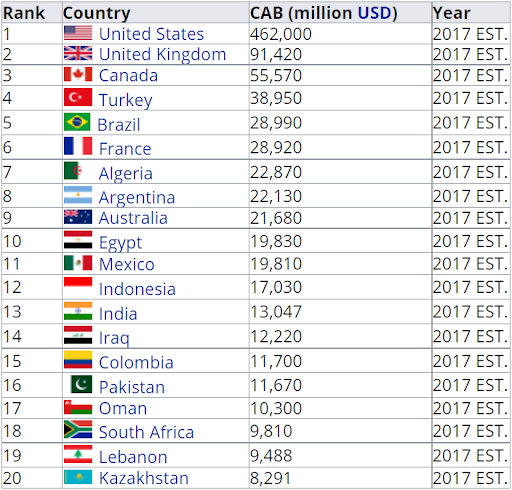.png)
Understanding Trade Deficits and Surpluses
Canada and other countries are constantly negotiating and renegotiating trade deals to gain economic advantage in the global economy. A basic understanding of some of the terminology surrounding trade can benefit our understanding of some of the trade deals in the news today.
What Is Balance Of Trade?
We often hear of the term trade deficit, also referred to as negative balance of trade (BOT), it is an economic measure of international trade where a country’s imports exceed its exports. When this occurs there is an outflow of domestic currency to foreign markets. Imports include both goods and services.
Trade Deficits And Surpluses
A trade deficit can occur when the domestic market fails to produce the goods in demand by its residents. An influence on a trade deficit or surplus can include currency exchanges, the availability of the product especially raw materials and bilateral and unilateral taxes.
Listed below are the top 20 countries with the largest Trade surpluses and Trade Deficits in 2017 (from the CIA World Factbook).
“This is a list of the 20 countries and territories with the largest surplus in current account balance (CAB), based on data from 2017 est. as listed in the CIA World Factbook.”

“This is a list of the 20 countries and territories with the largest deficit in current account balance (CAB), based on data from 2017 est. as listed in the CIA World Factbook.”

A country with a large trade deficit borrows money to pay for its goods and services, while a country with a large trade surplus lends money to countries with deficits.
Economists arrive at a trade deficit or surplus for a specific country over a period of a month, a quarter or a year by subtracting credits from debits. A debit includes imports, foreign aid, domestic spending abroad and domestic investments abroad. Credit items include exports, foreign spending in the domestic economy and foreign investments in the domestic economy.
Some countries are dependent on imports and as such are almost certain to have a trade deficit. As an example the US has had a trade deficit since 1976 because of its dependency on oil imports and consumer products. China is a country that produces and exports many of the worlds’ consumables and therefore has recorded a trade surplus since 1995.
US And Canada’s Balance Of Trade
The US has a $12.5 billion trade surplus with Canada, its second largest trading partner. The US has a $55 billion trade deficit with Mexico and $385 billion deficit with China, its largest trading partner. The US has a $92 million trade deficit with European nations.
For 38 years up until 2009, Canada has recorded a trade surplus. Since 2009 Canada’s trade balance has been in the deficit (with the exception of 2011 and 2014). Canada’s largest trade deficits are with China, Germany and Mexico and the largest surpluses are with the US, the UK and Norway.
Exporting Your Goods And Services
To improve the Balance of Trade in Canada and the US, domestic companies can export their goods and services to Countries where there is an unequal balance. In Canada, exporting to China, Germany and Mexico will help even out the balance. In the US, exporting goods and services to China and Mexico will help.
.png)



